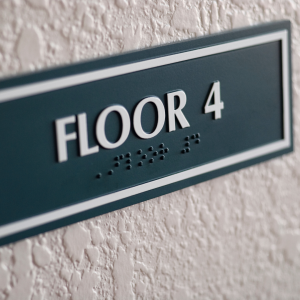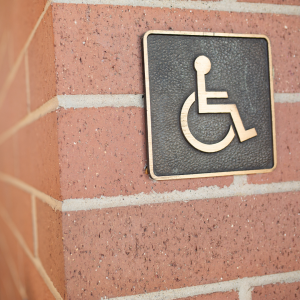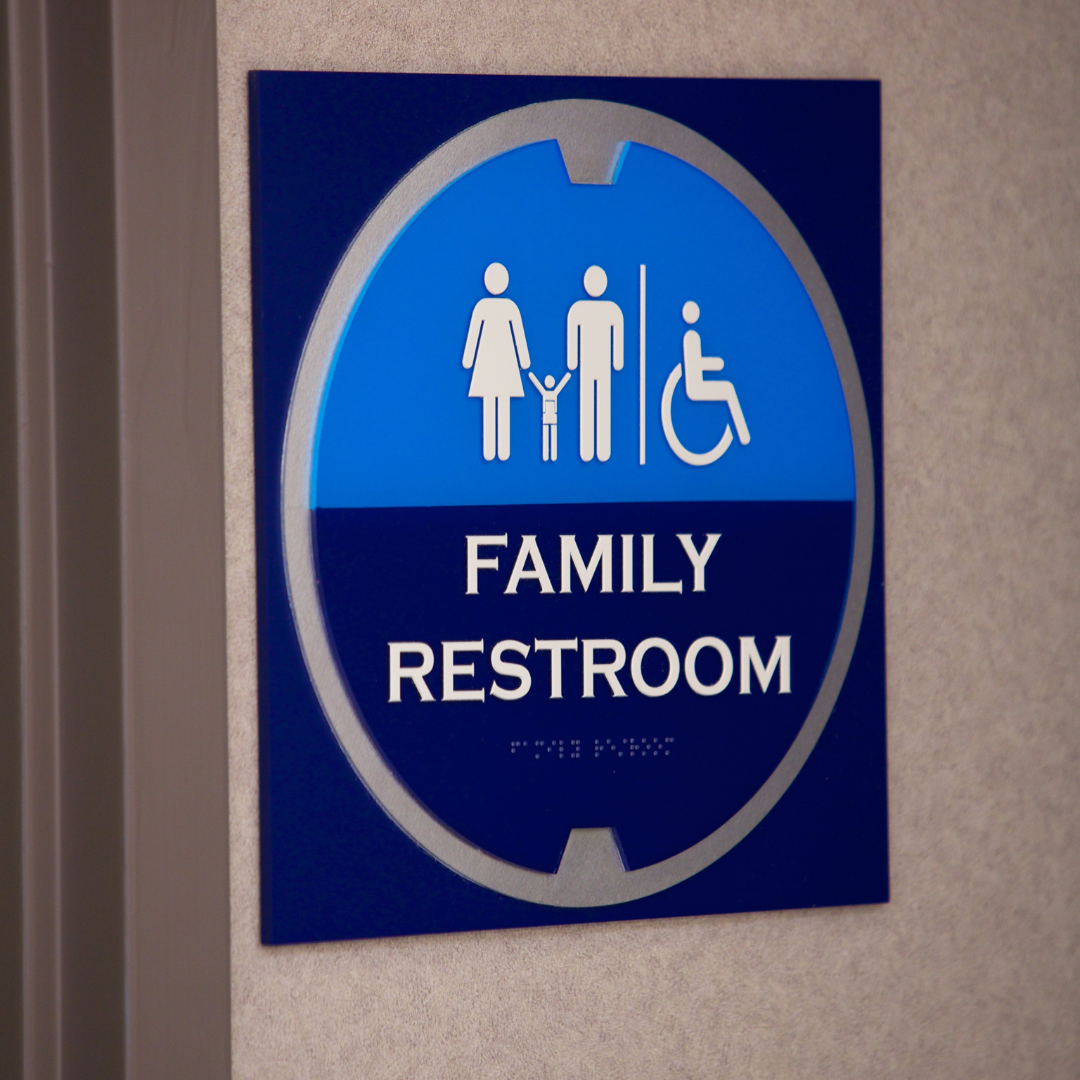As a consumer, you may not always notice ADA Braille signs or ADA restroom signs because they tend to blend into the background of public spaces. However, as a business owner, you’ve likely started to observe how essential they are for accessibility. If your business lacks ADA signage, you may be wondering if it’s necessary for your space.
The answer is yes—if your business is open to the public, ADA signage is a legal requirement. Whether your business is large or small, ADA signs are essential for ensuring that every customer can navigate your facility with ease, including those with disabilities. ADA signs aren’t just about compliance; they also demonstrate a commitment to accessibility, ensuring that all of your customers feel welcome and supported.

Why ADA Sign Placement Matters
One of the most important aspects of ADA signage is proper placement. ADA regulations specify exact guidelines for where and how signs should be installed, including their height, location, and visibility. Proper placement ensures that people with disabilities can easily locate entrances, restrooms, and other essential areas of your building. Incorrect placement of ADA signs can lead to confusion and make it difficult for individuals with disabilities to navigate your facility, leading to possible legal complications as well as customer dissatisfaction.
When placing ADA signs, it’s critical to install them at a height that’s easily readable and accessible for those in wheelchairs, as well as those who may have visual impairments. Signs must also be located in areas where they can be easily seen and read, without being obstructed by doors, plants, or other elements.
Where Are ADA Signs Required?
Many business owners are surprised to learn that ADA signage isn’t just required in restrooms and parking lots. In fact, ADA signage is mandatory for most permanent spaces within a public building. This includes entrance signs, directional signs, room identification signs, and restroom signs. The goal is to provide clear and consistent information to anyone navigating your facility, especially individuals who rely on ADA-compliant features to access your services.
Common areas that require ADA signs include:
- Restrooms
- Emergency exits
- Elevators
- Stairs
- Parking spaces (especially ADA-designated parking spots)
- Entrances and exits
- Any room that doesn’t change in function, such as offices, conference rooms, or storage spaces

What Is a Temporary vs. Permanent Space?
Understanding the difference between temporary and permanent spaces is critical when determining where ADA signs are required. Permanent rooms or spaces are those that do not change their function over time. For example, an office will always be an office, a conference room will always serve the same purpose, and restrooms remain as they are. ADA signs are mandatory for these spaces to help all individuals, including those with visual impairments, navigate your building.
On the other hand, temporary spaces, such as meeting rooms or event spaces that change their function regularly, are often exempt from ADA signage requirements. However, it’s always best to ensure that signage in these areas is still accessible and easy to read, even if it doesn’t follow the full ADA guidelines.
What Rooms Need ADA Signs?
Any room that has a permanent function requires ADA signage. This includes restrooms, offices, mechanical rooms, storage areas, conference rooms, break rooms, and any other space that is permanently assigned to a specific function. Even rooms that aren’t frequently used by the public, such as utility rooms or staff-only areas, must have ADA signs if they serve a permanent purpose.
Additionally, ADA signs are required in areas such as:
- Parking lots (especially designated ADA parking spaces)
- Emergency exits
- Elevators and stairwells
- Hallways leading to critical areas, such as restrooms or exits
ADA signage is essential for any business that is open to the public. By ensuring that your facility is accessible and easy to navigate for individuals with disabilities, you’re not only complying with legal regulations but also creating a welcoming and inclusive environment for all customers. Proper ADA sign placement, compliance with regulations, and clear signage in permanent spaces are crucial to ensuring the safety, accessibility, and satisfaction of your customers. Whether you need ADA restroom signs, Braille room identification signs, or parking lot signage, it’s important to work with an experienced signage company like National Branding to make sure your business remains compliant and accessible.




